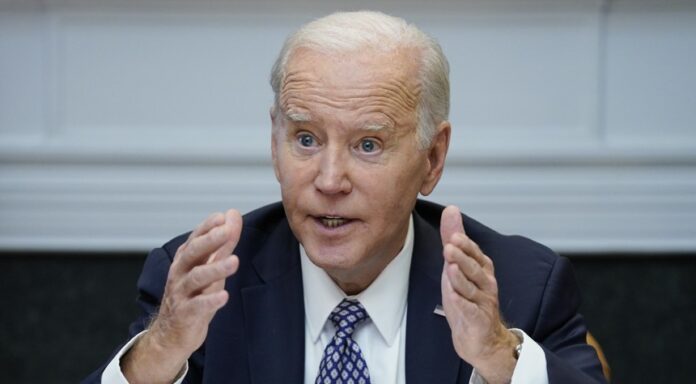Whereas Bidenomics stinks, at least according to voters, Trump’s economy circa 2018–19 was dynamic in that it was based almost entirely on Reaganomics, or, as I prefer to call it, incentive-based economics, aka Supply-Side economics.
Ronald Reagan wasn’t always an economic contrarian, but his political evolution made him one. He was converted to supply-side economics by Jack Kemp, the audacious New York Congressman and former vice presidential candidate who passed away in 2009. Reagan’s and, by extension, Kemp’s economic policies gave rise to a prominent new economic theory in the 1980s, later heavily influencing the economic policies of not only Donald Trump but, to a lesser extent, even Bill Clinton.
Like Reagan, Trump’s economic policies emphasized business incentives, lower individual and corporate tax rates, and fewer regulations to stimulate economic growth and prosperity. Good stuff, all. Using verifiable data from the Office of Management and Budget (OMB) and the Bureau of Labor Statistics (BLS), specifically during Reagan’s time period, it becomes clear that incentive-based economics provides a fertile path to economic prosperity in the United States. However, today, despite Trump’s economic successes only a few short years ago, a pro-growth economic elixir is desperately needed.
Despite his constant boasts about his economic record, it is unequivocally the case that Trump’s economic program relied significantly on Reagan’s economic policies — and with comparable results. Reducing marginal tax rates for both individuals and small business enterprises was a central component of Reaganomics. Using the available data, it is evident that President Reagan’s tax cuts during the 1980s had a positive effect on the national economy as well as his successful foreign policy.
During Reagan’s presidency, the top marginal tax rate was reduced from a debilitating 70 percent to a far more reasonable and moral 28 percent. This reduction in confiscatory taxation substantially increased individuals’ and businesses’ disposable after-tax income, allowing them to save more, invest more, and spend more. In turn, this rise in economic activity fueled economic expansion, created nearly 20 million new jobs and small business startups, including women and other minority-owned businesses, and also helped finance Reagan’s military buildup, which one could say won the Cold War without firing a shot.
In addition, Reaganomics emphasized the importance of reducing business regulations, allowing the U.S. economy to thrive and innovate. Data from the BLS demonstrates the positive effects of deregulation in the 1980s. For instance, the deregulation of industries such as telecommunications and transportation resulted in increased competition and enhanced efficiency. This resulted in reduced consumer prices and a more robust and efficient economy. In addition, reduced regulations enabled businesses to allocate their resources more effectively, generating new opportunities for the economy to expand to accommodate a wider range of emerging industries.
Lowering marginal tax rates in the 1980s caused an economic expansion that lasted 92 months without a recession, the longest sustained economic expansion during a time of peace and the second-longest sustained in American history. Total federal revenues grew substantially; in fact, they more than doubled between 1980 and 1990, from just over $517 billion to over $1 trillion, representing a 28 percent increase in revenue adjusted for inflation. Despite lowering the rates across the board, as a percentage of gross domestic product, federal revenues decreased only slightly from 18.9 percent in 1980 to 18 percent in 1990. And individual income tax receipts also increased from slightly more than $244 billion in 1980 to nearly $467 billion in 1990. Adjusted for inflation, this represents a 25 percent increase.
To be sure, Reaganomics, often called “trickle-down economics” by Joe Biden and the Democrats though the term actually dates back to the 1930s, was actually closer to Niagara Falls. The growth achieved from Reagan’s economic policies spurred not only more investment in plants and equipment but also resulted in higher productivity to help mop up inflation, and ultimately set the stage for a sustained economic growth trajectory that lasted 92 months. Indeed, it is not an exaggeration to say that Reagan’s contrarian tax policies helped lay the groundwork for what would later become known as the Internet economy, which accrued to the benefit of President Clinton’s solid economy.
Examining job growth and unemployment rates during Reagan’s presidency provides further evidence of his tremendous economic success. The Gipper’s policies implemented during his time in office generated 19.4 million new jobs, most of which were head-of-household jobs. In addition, the unemployment rate, which stood at 9.6 percent in 1980, fell to 5.4 percent by the conclusion of his term, improving the standard of living for millions of working families.
Incentive-based economics promotes more economic autonomy and individual freedom. Reducing taxes and red and green tape compliance allows individuals and businesses to retain a greater portion of their after-tax income and pursue their entrepreneurial endeavors, or what Keynes called the animal spirits in the economy.
Lastly, President Reagan-style economic policies promise a brighter path to economic prosperity than what we are experiencing today. However, it should be noted that this is not a panacea. Other factors, such as fiscal restraint, sensible monetary policies (sound money), and a skilled labor force, also play important roles in fostering long-term economic growth. However, supply-side or incentive-based economics can help provide a solid foundation for economic growth in America, as was so clearly demonstrated in the 1980s and 1990s, as well as during Trump’s term, especially between 2018 and 2019 before the overreaction to COVID resulting in the misguided decision to shut down of the U.S. economy.




